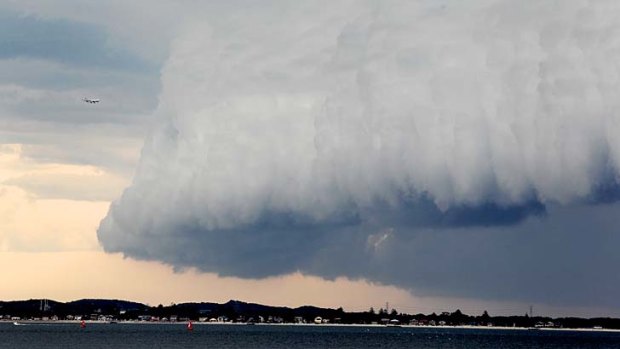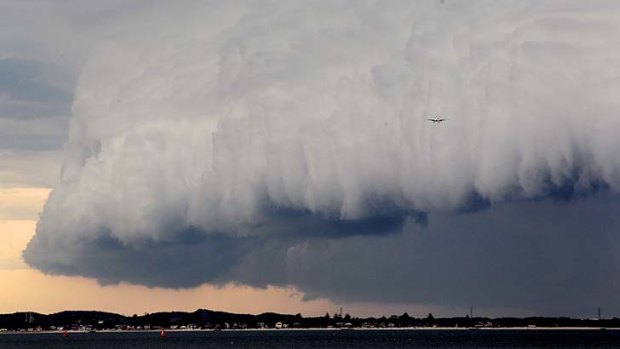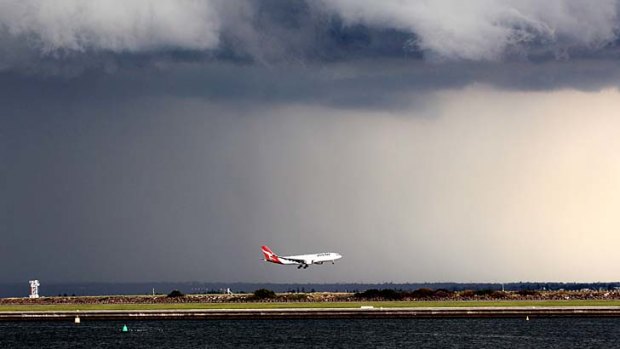By Craig Platt

The Qantas plane approaches the storm over the third runway at Sydney Airport.Credit: Janie Barrett
It's enough to make even the most confident flyer's palms sweat.
During Wednesday's severe storm in Sydney, Sydney Morning Herald photographer Janie Barrett snapped a spectacular photo from Botany Bay of a Qantas plane approaching the storm front.
While it look liked the plane was headed into the threatening cloud, in reality the pilots easily manoeuvred around the storm.
Alan Robertson, deputy flight training manager for Ansett Aviation Services, says the pilots would have used a combination of radar and their own view from the cockpit of the cloud to ensure they avoided flying into the spectacular storm.
"In something like that, there's usually pretty serious consequences inside," he said. "But they can see, and they'd have a huge picture on their radar."
Robertson, a former Cathay Pacific pilot who has trained pilots for all of Australia's major airlines, said there wouldn't be a pilot alive who would want to fly into the storm in the photo.

The pilots of the Qantas flight flew around the severe storm.Credit: Janie Barrett
"It would be very turbulent, the plane would be shaking around, it would be quite dark," he said. "It can be hard to keep a steady altitude and you would be regularly adjusting the air speed. There might be flashes of lightning around you. The pilots would be working hard to get out of it quickly. And of course it's not comfortable for the passengers."
Hail can be a major problem in storms, particular because hail at altitude can be much larger than the stones that eventually fall to the ground.
"At sea level you're only seeing what's left - they get to massive sizes up high," Robertson said. "You might get hail stones half the size of a football. They can cause some damage to the plane."

Pilots will normally be able to avoid severe storms by adjusting their flight paths.Credit: Janie Barrett
Occasionally airliners do get struck by lightning, but modern planes are designed to cope with this.
"If a plane is struck, the electricity runs around the outside of the aircraft, not through the middle," Robertson said. "There are static wicks on the wings, the tail, etcetera, to dissipate that electricity, so it doesn't cause a lot of damage. Though it's certainly loud - you'd hear it."
During Wednesday's storm, flights due to arrive at Sydney Airport between 4.20pm and 5.20pm were diverted to other Australian airports, including Canberra and Brisbane.
"It was a period of an hour and it was one of the quieter hours in the airport so it wasn't in the peak time," an airport spokeswoman said.
Flights returned to normal by 6.30pm but the affected airlines had to arrange to have passengers flown back to Sydney.
Sign up for the Traveller Deals newsletter
Get exclusive travel deals delivered straight to your inbox. Sign up now.